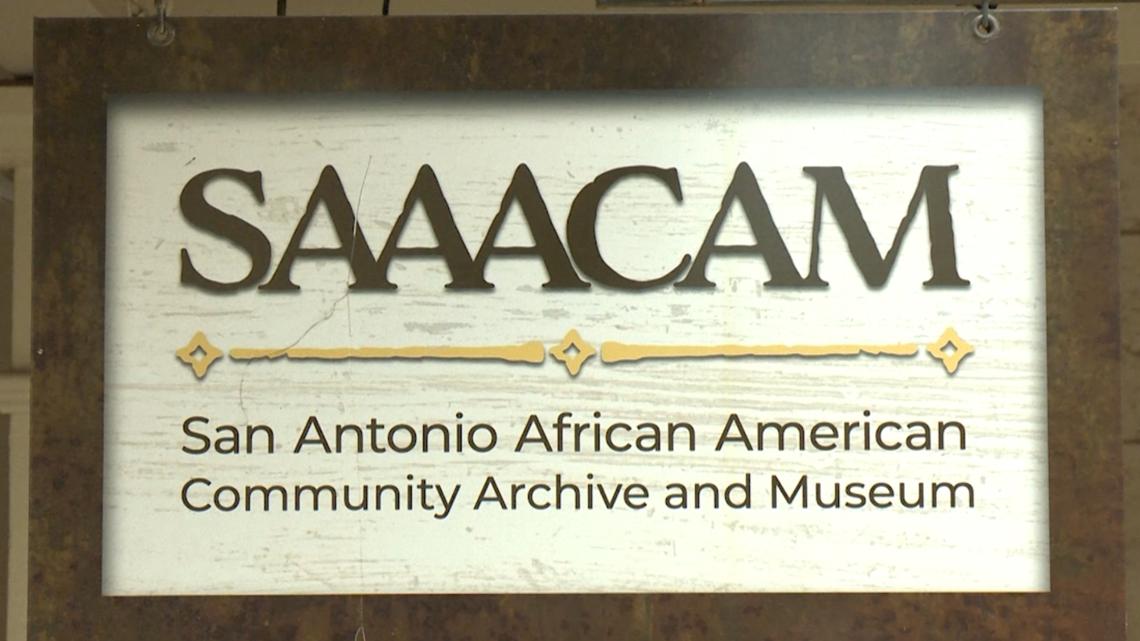
The San Antonio African American Community Archive and Museum opened its doors in Summer 2017 after three attempts were made to have a hub for Black Culture.
SAN ANTONIO — Museums serve as a space to learn, appreciate, and value different subjects, cultures and backgrounds.
Recently, businesses, universities and federal agencies have rolled back on their offices for diversity, equity, and inclusion.
According to the Kronkowsky Foundation, three attempts were made to have a Black History Museum since 2000.
In 2017, the San Antonio African American Archive and Museum was created by two men who saw a need for representation in the San Antonio Black Community.
For Everett Fly and George Frederick, it started off as a goal and desire to recognize the impack black people have made in San Antonio.
Fly, a San Antonio native recognized nationally as an architect and preservations says his push to start SAAACAM came in 2013, five years before San Antonio’s Tricentennial Celebration.
“I kept listening for, statements that would include African American history and there were none,” said Fly.
He knew the stories existed, but no one was sharing them.
“There was a magazine. Texas Highways Magazine. It said Celebrating San Antonio. It has a timeline you can see from 1500-2015 of the history of San Antonio,” said Fly.
Turning the pages, Fly read four mentions of Black people on a timeline of 500 years.
“Three of the four just say that they were slaves and the fourth one says that there was an African-American player, George Gervin, on the San Antonio Spurs,” said Fly. “I was not only personally insulted, but, broadly insulted. This absolutely had to be corrected.”
Fly did some research and took that info to George Frederick, a San Antonio native and director of the local non-profit, Hope House Ministries.
To piece together parts of history, the two needed a place to work.
Frederick bought the perfect one on 430 N. Cherry Street.
“This was a funeral home. Sutton & Sutton mortuary, and it had turned into a crack house. It has been totally demolished,” said Frederick.
The prominent Sutton Family lived in this home leaving a legacy for education, civil rights, and business in San Antonio and beyond.
The family hosted even more prominent figures like Booker T. Washington, Mary McLeod Bethune, and George Washington Carver.
“George Washington Carver coming to San Antonio? Never heard it in my life, and so he had been on this property,” said Frederick.
Blazing a new trail to start SAAACAM, Fly discovered the sound of Ellis Griffin, a San Antonian musician pictured on his farm in North Bexar County.
“He’s got a suit on. I mean, he’s dressed to the nines. What is he doing with this fiddle? I asked the family, and they say he played blues on that fiddle.
This treasure trove of stories had to be shared, so Fly reached way out to Dr. Bill Ferris at the University of North Carolina Chapel Hill.
“Dr. Ferris helped B.B. King set up his museum before he died,” said Fly.
Fly boarded a plane for North Carolina where he met Ferris’ colleague, Dr. Bryan Giemza.
“Dr. Giemza said, you’ve got something here. It’s worth saving. It’s worth developing what he called a community based archive,” said Fly.
But to build an archive, you need funding.
Dr. Giemza turned to the Andrew Mellon Foundation for a grant, so UNC Chapel Hill staff could train local volunteers how to archive and conduct oral history interviews.
That’s when support started pouring in.
“A&M San Antonio agreed to hold the archive interviews,” said Fly.
The Kronkowsky Foundation and San Antonio Consveration Society provided additional funding and support.
San Antonio volunteers also formed the Friends of SAAACAM who gathered history in the community.
“People showed up. The community was inspired,” said Fly.
The San Antonio African American Community Archive and Museum opened its doors in the summer of 2017.
I think we bridged some major gaps, within the city of San Antonio, and I thing that was the joy of it.
In 2021 SAAACAM moved to La Villita.
By the end of 2026, the historic Kress Building will house SAAACAM’s new cultural center.
The same spot as one of the first desegreagation movements in the city.
“I feel excited. I feel hopeful. I’m just thrilled that the legacy of African descendants in the region is going to be sustained,” said SAAACAM CEO Deborah Olowame.
In every form of SAAACAM, it will continue to document the history being written today.
“Too much has already been erased. Too much has already been marginalized and ignored. What I’ve learned is how important and how significant this history is. Not just to the Black community, but to all of us,” said Fly.
